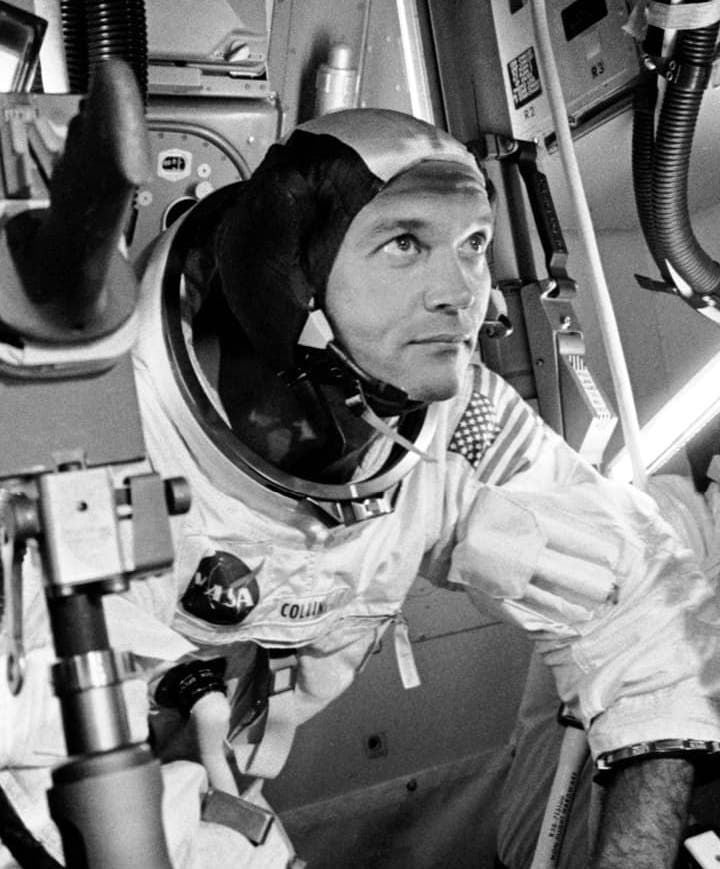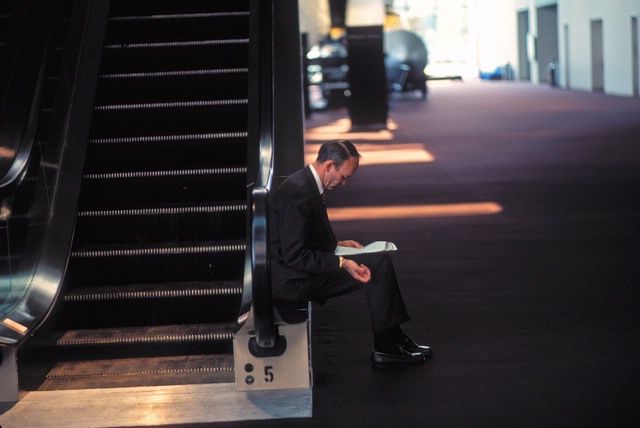Remembering Michael Collins
The National Air and Space Museum looks back at the extraordinary life of pilot, astronaut, and statesman Michael Collins, who has died at the age of 90.
:focal(457x402:458x403)/https://tf-cmsv2-smithsonianmag-media.s3.amazonaws.com/blogging/featured/13004h.jpg)
In his role as the third director of the National Air and Space Museum, Michael Collins had his own version of President John F. Kennedy’s three-part mandate for the Apollo lunar landing program. Rather than calling for a man on the Moon by the end of the decade, Collins campaigned for a Museum on the Mall by the nation’s bicentennial. For years, he worked tirelessly to complete the project—both the building’s construction and all the exhibits inside— in time for that deeply symbolic deadline. Marshalling a team of curators and designers, he succeeded. On July 1, 1976, as Collins stood next to the completed National Air and Space Museum building on the day of the historic ribbon-cutting, President Gerald Ford called the museum, “a perfect birthday present from the American people to themselves.” That building and the museum it houses stand as a lasting legacy to a gentleman whose many accomplishments as an astronaut and statesman most notably included being the command module pilot for Apollo 11, the first human landing on the Moon, in July 1969.
The second son of a career Army officer, Michael Collins was born in Rome, Italy, and lived in many different places before his family settled in Washington, DC. There, Collins graduated from St. Alban’s School before enrolling at the United States Military Academy at West Point. Upon his graduation, he entered the United States Air Force in 1952. He flew as a jet fighter pilot, including a tour in Europe, and as a test pilot, completing training at the USAF Experimental Flight Test Pilot School at Edwards Air Force Base.

Collins joined NASA as an astronaut in 1963, part of the third astronaut class. As the pilot of Gemini 10 alongside commander John Young, Collins became the first person to perform two spacewalks on the same mission. Three years later, he flew to the Moon on Apollo 11, circling it while Neil Armstrong and Buzz Aldrin walked on the surface. Collins eschewed his oft-used characterization as the world’s “loneliest person” during the mission, instead recalling the command module Columbia, currently on display at the Museum’s Steven F. Udvar-Hazy Center, as his “happy little home.” Collins also designed Apollo 11’s iconic mission patch. Unlike previous and subsequent examples, the Apollo 11 design omitted individual astronaut names, sharing credit with the thousands of people who supported their mission. The patch shows an American bald eagle descending toward the lunar surface while carrying an olive branch, symbolic of the mission’s peaceful goals.
After leaving NASA, General Collins became the Assistant Secretary of State for Public Affairs. Shortly thereafter, in 1971, he inquired about becoming the National Air and Space Museum’s third director, taking up the mantle at a critical juncture. The construction of a building had been approved but funding had not been authorized. Collins, with the support and advocacy of Senator Barry Goldwater, secured the funding and broke ground on the new building in 1972. After the fanfare of the public opening in July 1976, the building saw one million visitors within the first month. In 1978, Collins became an undersecretary of the Smithsonian Institution.

Michael Collins was the author of several books based on his astronaut experiences, including Carrying the Fire: An Astronaut’s Journeys (1974), still regarded by many as the best astronaut memoir ever written. His considerable list of awards and honors as a part of the Apollo 11 crew includes the Presidential Medal of Freedom, the Collier Trophy, the Harmon Trophy, the National Geographic Society’s Hubbard Medal, and a Congressional Gold Medal.
Those who knew General Collins remember his wit, intelligence, and thoughtfulness. He was devoted to his wife, Pat, their three children, and his whole family. The staff and community of the National Air and Space Museum mourn his passing and offer our condolences to his family.

